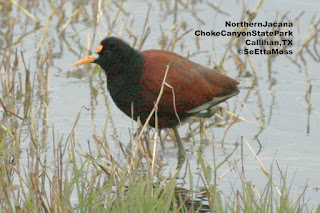Wintering Pine Warbler @SantaAnaNWR

Today was the Christmas Bird Count at Santa Ana National Wildlife Refuge which is located on the border of Mexico. Though small by National Refuge size at about 2,000 acres, approximately 400 bird species have been seen there. Named for the pine trees that are their usual habitat, this bird was foraging in some mixed tree species. This Pine Warbler flitted in mid canopy about 60-80 feet above the ground and I took these pics-habndheld- from a distance of about 50-75 feet. With reduced lighting in the trees, the pics came out fairly dark but not good enough to lighten them more. SeEtta





